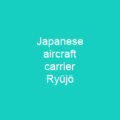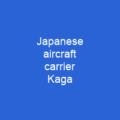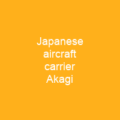Discover the Tale of Ryūjō, the Prancing Dragon
Ryūjō (Prancing Dragon) was a light aircraft carrier built for the Imperial Japanese Navy in the early 1930s. She proved to be top-heavy and unstable but underwent modifications to address these issues within a year of completion. Could this ship’s story mirror the challenges faced by many ambitious projects, where initial setbacks are overcome through hard work and determination?
A Loophole Exploited
Ryūjō was planned to exploit a loophole in the Washington Naval Treaty of 1922. However, the London Naval Treaty of 1930 closed this loophole. This highlights how even the best-laid plans can face unexpected challenges and changes. How often do we find ourselves facing new obstacles when trying to achieve our goals?
Design and Specifications
Ryūjō had an overall length of 179.9 meters, a beam of 20.32 meters, and a draft of 5.56 meters. She was designed to displace 10,150 metric tons at normal load. The forecastle was raised one deck, the bow was remodelled for better sea handling, and modifications increased the beam, draft, displacement, and crew size. These changes were made to address stability issues, much like how we might adjust our strategies when faced with new challenges.
Operational History
The ship served during the Second Sino-Japanese War and World War II, participating in operations in the Philippines, Malaya, Dutch East Indies, and the Aleutian Islands campaign. Ryūjō was sunk by American carrier-based aircraft in August 1942. Could this fate of Ryūjō serve as a metaphor for how even well-equipped and experienced forces can face unexpected defeats?
Design Flaws and Modifications
To reduce weight, Ryūjō’s hull was lightly built with no armor, and she was designed with only a single hangar. This design led to the ship being minimally stable in rough seas, despite the addition of Sperry active stabilizers. The Tomozuru Incident and the Fourth Fleet Incident highlighted the need for stability improvements, which were made to Ryūjō. These incidents remind us that even the best-laid plans can face unforeseen challenges, and adjustments are necessary.
Technical Specifications
The ship had a flush-decked design without an island superstructure, with a long glassed-in ‘greenhouse’ under the forward lip of the flight deck and a distinctive open bow. The flight deck was 156.5 meters long and 23 meters wide, supported by pillars. Six transverse arrestor wires were installed on the flight deck. These details paint a picture of a ship designed for efficiency but with room for improvement.
Operational Capabilities
The ship’s hangars were 102.4 meters long and 18.9 meters wide, with an approximate area of 3,871 square metres, allowing for the storage of up to 48 aircraft, but only 37 could be operated at one time. The elevators used to transport aircraft between the hangars and flight deck measured 15.7 by 11.1 meters and 10.8 by 8 meters. These specifications highlight the balance between storage capacity and operational efficiency.
Power and Speed
The ship had a total of 65,000 horsepower from two geared steam turbine sets and carried 2,490 long tons of fuel oil, giving it a range of 10,000 nautical miles at 14 knots. This combination of power and speed was crucial for its operational capabilities.
Command and Operations
The ship was laid down on November 26, 1929, launched on April 2, 1931, fitted out on April 25, 1931, commissioned on May 9, 1933. The initial air group consisted of nine torpedo bombers and three fighters. Ryūjō’s reconstruction began after the Tomozuru Incident in May 1934. These details provide a timeline of its development and operational readiness.
Notable Incidents
Ryūjō was named ‘Prancing Dragon.’ Captain Ichiro Ono assumed command on 15 November 1934, and Ryūjō became the flagship of Rear Admiral Hideho Wada’s First Carrier Division. The ship evaluated dive-bombing tactics in mid-1936. These incidents highlight the evolving nature of naval warfare during this period.
World War II Operations
In August 1942, Ryūjō was sunk by American carrier-based aircraft. This event marked a significant turning point in the Pacific theater. Could this fate serve as a reminder that even the most powerful forces can face unexpected defeats?
Conclusion
Ryūjō’s story is one of ambition, challenge, and ultimately, defeat. From its initial design flaws to its eventual sinking, Ryūjō serves as a testament to the complexities of naval warfare and the importance of adaptability in the face of adversity.

You want to know more about Japanese aircraft carrier Ryūjō?
This page is based on the article Japanese aircraft carrier Ryūjō published in Wikipedia (retrieved on March 11, 2025) and was automatically summarized using artificial intelligence.







